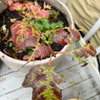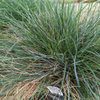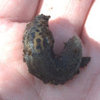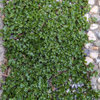Will pirate bugs control lace bugs?
kelgalon
13 years ago
Related Stories

EDIBLE GARDENSGarden BFFs? Why Your Vegetables Are Begging for Companion Plants
Foster friendships among plants for protection from pests, pollination support and color camaraderie
Full Story
PETSDealing With Pet Messes: An Animal Lover's Story
Cat and dog hair, tracked-in mud, scratched floors ... see how one pet guardian learned to cope and to focus on the love
Full Story
LIFEModern Manners for Conflict-Free Family Visits
Avoid thermostat wars, pet peeves and the great shower squeeze with these tips for having family as houseguests
Full Story
KITCHEN DESIGNStandouts From the 2014 Kitchen & Bath Industry Show
Check out the latest and greatest in sinks, ovens, countertop materials and more
Full Story
MOST POPULARMy Houzz: Open-Air Living in the Mountains of Bali
Community, jaw-dropping beauty and sustainability come together in a tropical paradise for a London expat
Full Story
GARDENING GUIDESWe Bust 4 More Native Plant Myths
Have you been taken in by these fallacies about gardening with native plants?
Full Story
GARDENING FOR BUTTERFLIESGardening for the Bees, and Why It’s a Good Thing
When you discover how hard bees work for our food supply, you may never garden without them in mind again
Full Story
GARDENING FOR BUTTERFLIES3 Ways Native Plants Make Gardening So Much Better
You probably know about the lower maintenance. But native plants' other benefits go far beyond a little less watering and weeding
Full Story
BEDROOMS11 Reasons to Love White Bedding
For easy bedding that makes neutrals sing and accessories pop, look to the white side
Full Story
LIFESimple Pleasures: Put On Your Slippers
Preserve the peace and protect your floors and carpets by turning your home into a no-shoes zone
Full Story










jean001
Kimmsr
Related Professionals
New Bedford Landscape Architects & Landscape Designers · Surprise Landscape Architects & Landscape Designers · Windham Landscape Architects & Landscape Designers · Carson Landscape Architects & Landscape Designers · Oconomowoc Landscape Architects & Landscape Designers · Taylorsville Landscape Architects & Landscape Designers · Bethel Park Landscape Contractors · Costa Mesa Landscape Contractors · Newnan Landscape Contractors · Palatine Landscape Contractors · Selden Landscape Contractors · Siloam Springs Landscape Contractors · West Palm Beach Landscape Contractors · Raytown Landscape Contractors · Ferguson Landscape ContractorskelgalonOriginal Author
rhizo_1 (North AL) zone 7
kelgalonOriginal Author
tsugajunkie z5 SE WI ♱
kelgalonOriginal Author
jean001
Kimmsr
rhizo_1 (North AL) zone 7
jean001
Kimmsr
rhizo_1 (North AL) zone 7